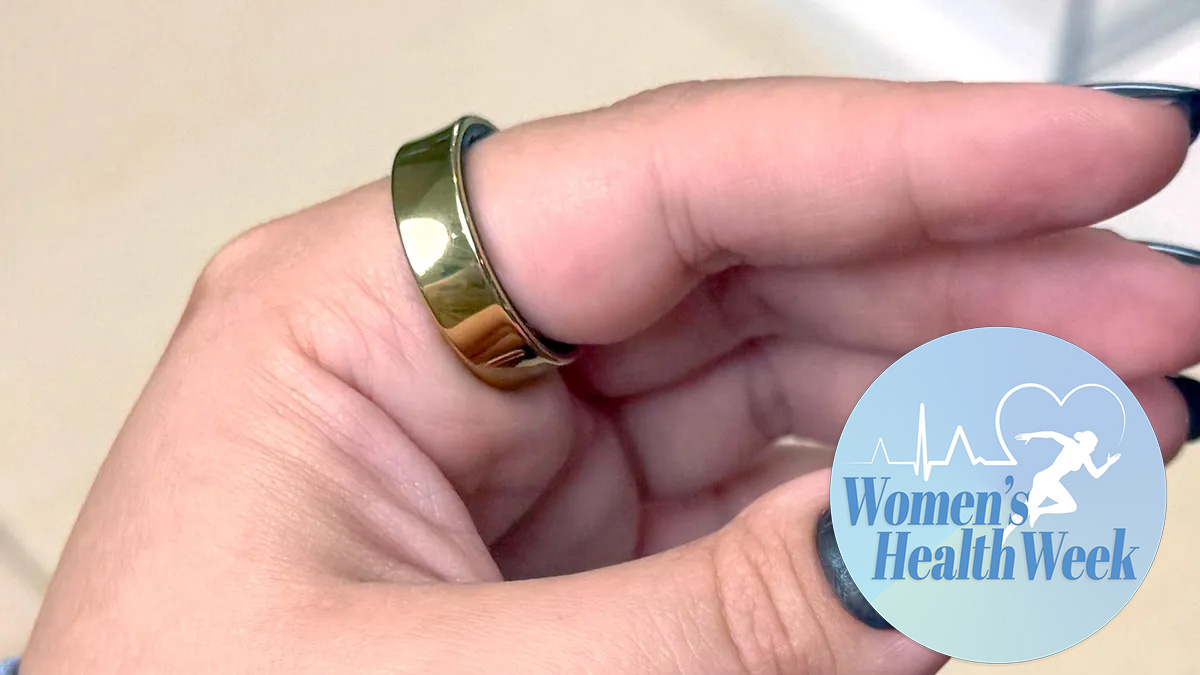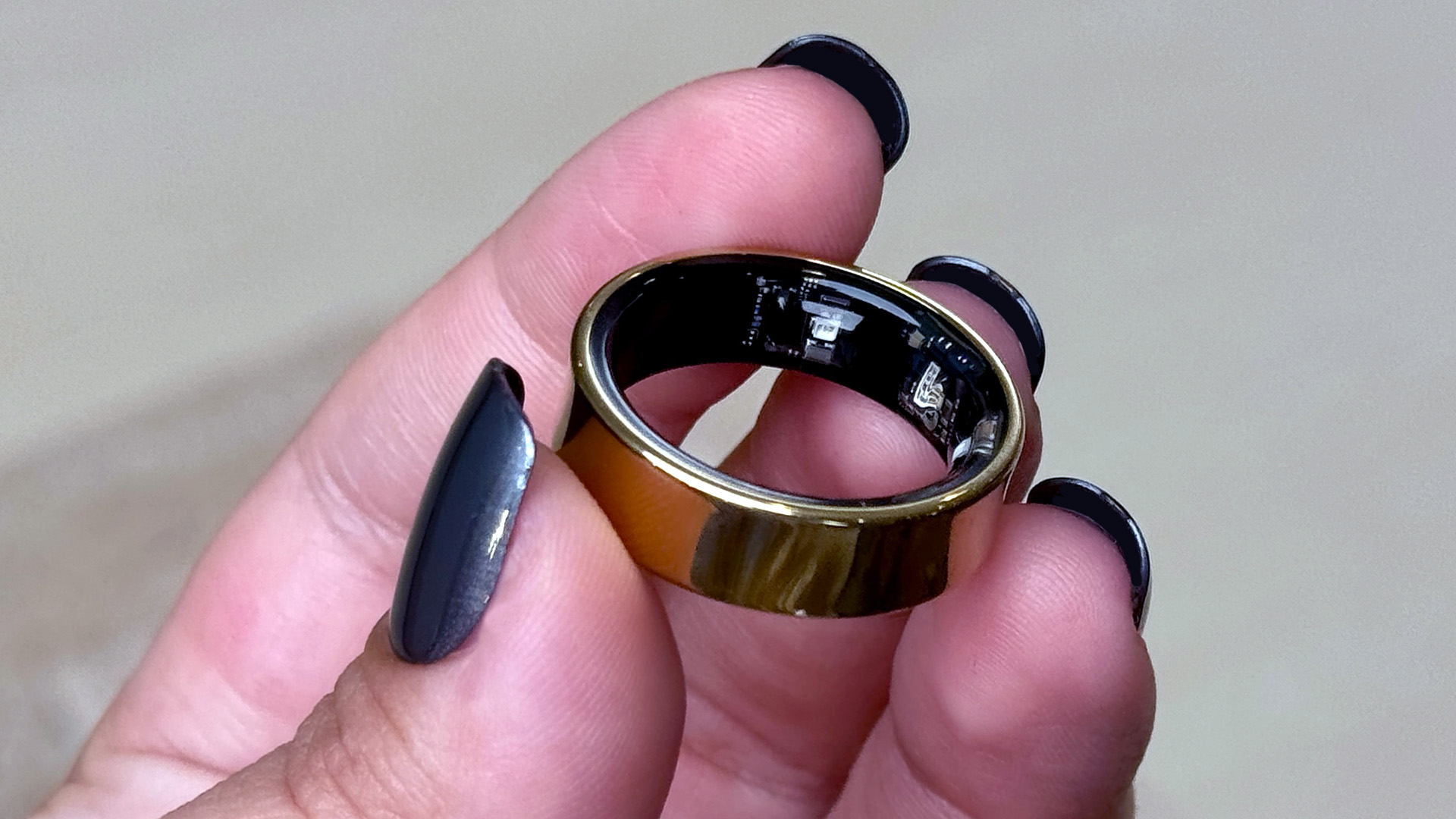Samsung Galaxy Ring is changing the game for cycle tracking — here’s how
Tracking your cycle: no strings (or subscriptions) attached.

Since the Galaxy Ring launched last summer, I’ve been wearing it regularly and have had plenty of time to explore what it can do. I’ve come to appreciate how effortlessly it collects data on things like skin temperature, heart rate variability, and sleep (one of the reasons it made our list of the best smart rings). Most mornings, I open the Samsung Health app to check in on my recovery and cycle, and more often than not, the insights feel surprisingly in tune with how I actually feel.
This article is part of Tom's Guide's Women's Health Week — a series of content that explores how technology and the right workouts can support and empower women through every phase of life.
That said, I haven’t worn the ring every single day and night. As a big part of my job involves testing wearables and writing about health tech, there are times when I need a break from constantly analyzing my own well-being. After a while, even the best insights can start to feel like information overload, like when my Garmin watch flagged a potential heart issue.
Still, when I’ve used the Galaxy Ring consistently, I’ve found it to be an insightful tool, particularly when it comes to menstrual cycle tracking. But how accurate is it? And what should you know before relying on it for reproductive health? I tested it across several cycles and asked Dr. Lisa Becht, a board-certified OBGYN and Reproductive Endocrinology and Infertility Specialist, to weigh in.
Here’s what I learned.
How the Samsung Galaxy Ring tracks your cycle
To look at, the Samsung Galaxy ring doesn’t scream 'femtech'. First of all, it’s unisex, it's fairly minimal looking, and if you get the gold or silver finish, it looks more like a piece of jewelry than a health tracker. But under the surface, it gathers key metrics that feed into Samsung’s Cycle Tracking feature via the Samsung Health app. These include skin temperature changes during sleep, heart rate, sleep stages, and respiratory rate.
Cycle Tracking uses a combination of calendar-based prediction and retrospective temperature trend analysis, powered in part by Natural Cycles, a digital birth control app cleared by the FDA. You’ll need to manually enter the first day of your period, but from there, the Galaxy Ring uses data from your body to estimate fertile windows and ovulation.
Unlike the Oura Ring, which requires both an Oura Membership ($5.99/month after a free trial) and a separate Natural Cycles subscription ( $21.99/month or $149.99/year), the Galaxy Ring offers these features without additional subscription fees.
Get instant access to breaking news, the hottest reviews, great deals and helpful tips.
In my testing, I found the Samsung Galaxy Ring predictions to be impressively accurate. That said, if you’re used to more granular ovulation data like LH test strips or cervical mucus tracking, Samsung’s system may feel a little vague to you. You don’t get a specific ovulation date or fertility score, just a general window and phase updates.

What a fertility experts has to say about how wearables support cycle tracking

To better understand how the Samsung Galaxy Ring fits into the broader picture of cycle tracking and why that matters for anyone trying to better understand their fertility, I spoke with Dr. Lisa Becht, a board-certified obstetrician-gynecologist (OBGYN) and Reproductive Endocrinology and Infertility Specialist.
While she emphasized that wearables are not diagnostic tools, she explained they can help users gain a clearer view of their cycles and, in some cases, prompt earlier conversations about fertility with a healthcare provider.
“Consumer wearables are gaining popularity and can help patients track their cycles and fertility more effectively,” Dr. Becht told me. “With accurate tracking, this could quicken the time to pregnancy for some. For others, if they are not detecting potential ovulation, it may lead to a patient seeking care earlier, which is great.”
That said, she cautioned that the markers wearables rely on, like temperature and heart rate shifts, are subtle. “Changes in temperature, heart rate, etc, that could denote ovulation and potential early pregnancy are very small changes, so it might not always be detected accurately,” she said.
“Some patients may get false confidence from the results, and this could delay them in seeking fertility care. So overall, I think this technology is helpful as long as a patient is aware of its limitations.”
The benefits, and the blind spots

There’s no doubt that the Galaxy Ring makes cycle tracking more accessible. You don’t need to log symptoms daily, take your temperature manually, or wear a bulky wrist tracker to bed. It does the hard work while you sleep and rolls that data into clear visuals in the Samsung Health app.
But it’s not a complete cycle tracking tool. You won’t get pinpoint ovulation confirmation, and as Dr. Becht noted, the biological signals it relies on can be too subtle to detect accurately.
If you have irregular cycles, the limitations become more pronounced. "Use wearables with caution," Dr. Becht advised. "They can be helpful, but if you have long or irregular cycles, seek care earlier with an OB/GYN or fertility doctor."
Final thoughts
The Galaxy Ring won’t replace ovulation test kits, and it shouldn’t be your only tool for cycle tracking if you’re actively trying to conceive. But it is a solid step forward in making cycle tracking passive, consistent, and wearable.
If you're already in the Samsung ecosystem, the Galaxy Ring offers a polished, subscription-free way to keep tabs on your overall health and cycle. It’s especially useful if you want an easy way to spot trends or bring something tangible to your next gynecology appointment. Just be sure to pair it with education, realistic expectations, and ideally, professional guidance.
As for the future? Dr. Becht hopes wearables will continue to evolve. "Increasing technology and precision will hopefully improve the ability of these devices to support women’s cycle tracking and reproductive health,” she said.
More from Tom's Guide
- I ditched the Oura Ring for the Samsung Galaxy Ring — here's why I won't be going back
- Samsung Galaxy Ring vs. Oura Ring — which smart ring wins?
- Samsung Galaxy Ring 2 — everything we know so far

Jessica has been a fitness writer at Tom’s Guide since 2023, bringing three years of experience writing about health, fitness, and the great outdoors. Her passion for exercise began during her childhood, where she spent weekends hiking and competing in local athletics club events. After earning a master’s degree in journalism from Cardiff University, Jessica found the perfect way to combine her love of storytelling and fitness into a career.
Jessica is passionate about testing fitness gear and tech, using her reviews to help readers make informed buying decisions. She ran her first marathon in April 2024, finishing it in 3 hours and 48 minutes. Through her training, she’s developed a deep understanding of what it takes to grow as a runner, from effective workouts and recovery techniques to selecting the right gear for every challenge.
When she’s not at her desk, Jessica enjoys spending time in the kitchen crafting new recipes, braving cold water swims and hiking.
You must confirm your public display name before commenting
Please logout and then login again, you will then be prompted to enter your display name.
